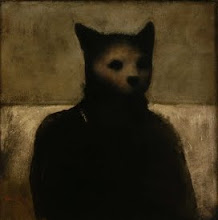
My eldest son has taken a shine to the martial arts (at least his new white belt and gi). While it has been fun doing some basics with him, and letting him have a laugh while rolling about, it makes me reflect upon what I should eventually teach him, and what to omit--for now.
He promises that what I show him will not be used on brothers, friends, parents, etc. Nonetheless, I am really only showing him blocks, front kicks and open palm strikes on the punching bag. And usually, the whole thing ends up being about me throwing him "judo style" onto the couch. (He's just four, after all).
But the real question I have is twofold: 1) What's the balance between defense/fun/and safety for his age and a bit older.
2) What style would I introduce him to first. (Of course he'll be invited to formally train with me at some point--and my own style is my first choice for my own defense--but I don't really think all the techniques we learn are suitable until he's old enough to realize the serious nature of the techniques).
He seems to find basic karate and judo enjoyable. And maybe these are a perfect start, as both are solid--especially together--and can be adapted/expanded into other arts such as aikido, jui-jitsu, or whatever he likes.
For now, however, his training will be some fun basics and some couch throws. Learning by having fun is the best method at this age, and to be honest, I like it, as well.
I'm just thinking ahead, that's all.
*note: I once listened to an Ojibwa elder tell a story about the "old days" and about a group of seven-year-olds practicing their bow skills in the woods. He added, "We had no problem letting kids have these responsibilities, and as a result of our trust, they took the weapons more seriously."






